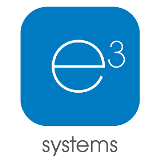The State of Connectivity: Independent Advice

With over 6,000 superyachts predicted to be in operation by 2020, the ever-increasing thirst for connectivity is driving change across the sector. The reality of Low Earth Orbit satellites is inching ever closer. New antenna technology is delivering more choice from more powerful compact satellite dishes to flat panels. Meanwhile the cost of 4G data is tumbling globally. And who knows what effect the arrival of 5G will have on the industry, if any?
All this adds up to a complex decision-making process when looking at communications for your yacht. Reality is that several parties are often involved, from yard technical teams and management companies to captains and ETOs - with owners and their representatives ultimately responsible for the final decision.
It’s an important decision which makes it more essential than ever for those involved to be able to rely on impartial advice wherever they can. Independent integrators such as Palma-based e3 Systems are not exclusively tied to a single provider and are ideally positioned to provide invaluable advice.
What VSAT?
There is a lot of choice on the market and many factors can influence choice – the most important being the sailing itinerary. If a yacht is simply cruising the Med, a regional provider such as Hispasat or Thor 7 may be the sensible choice. However, if transatlantic journeys are planned and maybe a winter stay in the Caribbean, then providers such as Speedcast or Marlink come into their own for conventional antennas.

For flat panels, eSAT is a specially designed service that provides cost-effective connectivity. If a yacht intends to head off the beaten track, then a solution offering global coverage such as Inmarsat Fleet Xpress is necessary, as this combines high throughput global bandwidth with the peace of mind of L Band for backup.
With growing demand for the high speed internet such as we have got used to on shore, bandwidth is also important in making a decision. Cost is a big consideration too and even in the superyacht sector there are always budgets to be met. Then there are factors such as customer support and the inbuilt flexibility of contracts.
Ultimately, the final decision will probably be a balancing act between cost and other factors.
“87 per cent of technical professionals questioned say there are between two and fivepeople involved in the satcomms specification and procurement process. The crucial factors for senior crew members were bandwidth followed by price. With owners demanding a seamless internet connection and home broadband equivalent speeds on their yachts”. Inmarsat Superyacht Connectivity Report 2018

Keeping it cost-effective with 4G
For both VSAT and 4G data there is a lot of choice on the market. While satellite connectivity remains relatively expensive and generally requires a minimum contract, 4G data has dropped in price over the past few years and comes with much more flexibility, making it the primary choice of connectivity for yachts within range – which can be up to 14km off shore.
Traditionally 4G was available on a country basis, however, increasingly coverage is provided on a regional or even global basis. Meanwhile rates have dropped and contracts offer increasing flexibility.
The best of both worlds
Most yachts will need both VSAT and 4G over the course of a season, so an increasingly cost-effective and logical choice is for a hybrid service which combines both – depending on signal strength. Many companies are tied to specific providers which can limit choice, but there are independent options which take into account that one size does not fit all, such as e3’s HYBRID solution, giving customers a choice of services that will best suit their real needs.


Post your comment
You cannot post comments until you have logged in.
Login to post a commentComments
No one has commented on this page yet.
RSS feed for comments on this page | RSS feed for all comments